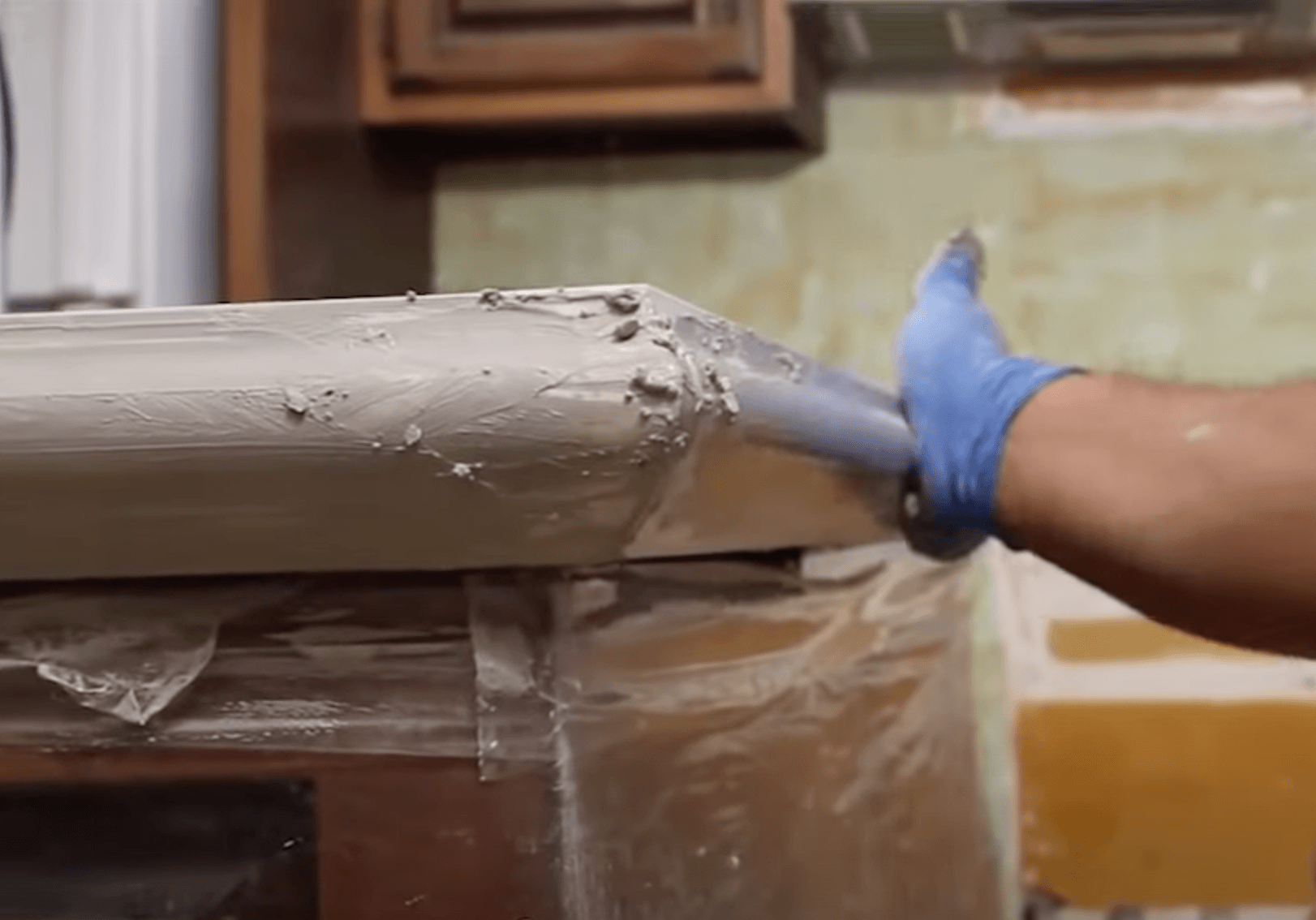How to Slurry Voids on the Edges of Concrete Countertops
Occasionally, when forms are removed after pouring a concrete countertop, voids such as pinholes or pitting can occur in the edge. This mainly happens when the concrete didn’t fill in the form properly, due to air being trapped against the edge form. Vibrating will help force out the trapped air and cause the concrete to consolidate against the edge form. However, if not vibrated enough, these pockets can occur leaving an unsightly finish. Vibrating both the outside and inside of your mold can help eliminate most air bubbles and tapping on the outside of the mold with a hammer can also help eliminate any residual voids.
When you remove you edge forms and discover there are more or larger voids than desired, don’t panic, they can be fixed! Whether they are small pinholes or larger holes, a patching product like Z Counter-Patch can help. Counter-Patch is a cementitious mix that uses very fine silica flour as the aggregate, so there aren’t any larger sand particles to get in the way of filling small pinholes. It also has acrylic modifiers to make sure it adheres and doesn’t crack or chip. This is often referred to as a slurry mix.
When applying to smaller voids or pinholes, the patch can be mixed with water to a slurry-like or paste consistency and rubbed into the voids/pinholes with a gloved hand. After allowing it to dry, usually 4-6 hours, the patch can then be sanded smooth. If the hole being filled is deeper, the Counter-Patch may take longer to cure. If the void is quite large, gapped, or even concrete is missing from the edge, this same patch can be mixed thicker to repair and rebuild. In this case, you would mix the patch with water to a putty consistency. The void can be filled with the patch a little at a time. You will not fill it in all at once, it can be built up with a few applications. Once built up, a piece of edge form can be used to help reshape/reform the edge.
Once all patching and repairing are complete and areas are sanded smooth, the top is ready to be colored and sealed. Although the patch can be stained, it can take stain differently than the concrete due to the modifiers in it, so expect some color variation when using a patching product like Counter-Patch.
Written By:
Ali Rafter

